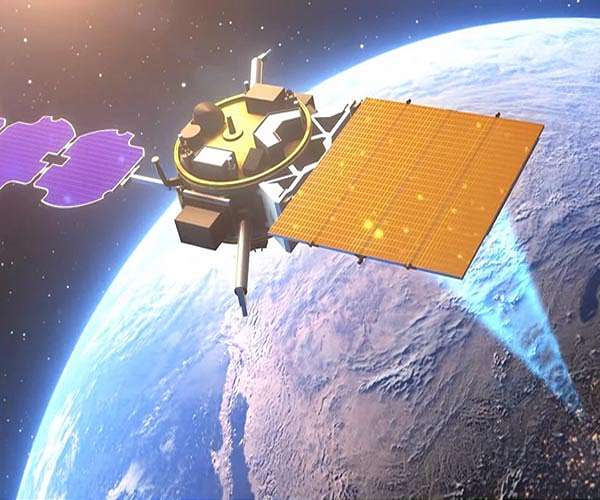
Beaming solar power from satellite array is Earth Day focus for AFRL (Image Credit: Space Daily)
In honor of Earth Day, the Air Force Research Laboratory, or AFRL, is highlighting its efforts toward harnessing the Sun’s energy, converting it to radio frequency, or RF, and beaming it to the Earth providing a green power source for the U.S. and allied forces.
Key technologies need to be developed to make such a challenging process a reality.
In response to this challenge, AFRL formed the Space Solar Power Incremental Demonstrations and Research, or SSPIDR, project to develop the critical technologies needed for such a system. These technologies include further improving solar cell efficiencies; solar to RF conversion and beam forming; reducing large temperature fluctuations on spacecraft components; and deployable structure concept designs.
“A major objective of SSPIDR is to break the one-meter-squared aperture threshold for solar power capture and conversion, and beam that energy to the ground,” said James Winter, AFRL principal engineer and SSPIDR project manager. “AFRL will do this with Arachne, SSPIDR’s keystone flight experiment that is anticipated to launch in early 2025.”
Other demonstrations of the target technologies include the Space Power INcremental DepLoyables Experiment, or SPINDLE, – a deployable structures experiment still undergoing trade studies, and the Space Power InfRared Regulation and Analysis of Lifetime, or SPIRRAL, experiment – a thermal experiment exploring the concept of using variable emissivity materials to reduce the large temperature swings experienced by spacecraft components on orbit. SPIRRAL is anticipated to launch in 2023 for a test campaign onboard the International Space Station.
“The technologies demonstrated by Arachne, SPINDLE and SPIRRAL will pave the way for an integrated large scale, space-based solar power system capable of collecting solar energy, converting it to RF and beaming it to a receiving station on the ground for conversion to clean, usable power,” Winter said.
Col. Eric Felt, the director of the AFRL Space Vehicles Directorate, considers SSPIDR one of his most important programs.
“An operational system like SSPIDR would provide power ‘on demand’ anywhere on the globe regardless of weather or latitude, day or night and without vulnerable logistics lines,” Felt said.
The value of space solar power has been internationally recognized as a foundational capability in need of development.
“This technology will enable expanded space capabilities and give us military advantage, as well as provide economic growth and commerce with more sustainable energy sources.” Felt said. “We are excited about the possibilities that the conversion of space solar power energy brings to our national defense and the humanitarian and green energy benefits it will offer to the world.”
Learn more about AFRL’s strategy for developing the innovative technologies needed to support a large scale space solar power transmission system in the video here
Related Links
Air Force Research Laboratory
All About Solar Energy at SolarDaily.com
|
|
Tweet |
|
|
|
We need your help. The SpaceDaily news network continues to grow but revenues have never been harder to maintain. With the rise of Ad Blockers, and Facebook – our traditional revenue sources via quality network advertising continues to decline. And unlike so many other news sites, we don’t have a paywall – with those annoying usernames and passwords. Our news coverage takes time and effort to publish 365 days a year. If you find our news sites informative and useful then please consider becoming a regular supporter or for now make a one off contribution. |
||
|
SpaceDaily Contributor $5 Billed Once credit card or paypal |
SpaceDaily Monthly Supporter $5 Billed Monthly paypal only |
|
Solar technology and community engagement team up to help low-income farmers in India
Stanford CA (SPX) Apr 19, 2022
Involving people who will directly benefit from technology research is critical to sustainable development, as researchers have experienced by working with chili farmers in India for more than four years.
A team led by Stanford University developed a solar-powered technology to improve the quality and quantity of dried agricultural produce and potentially increase incomes of smallholder farmers in India, which average around $5 per day. Due to better quality, chilies dried by the equipment were so … read more









